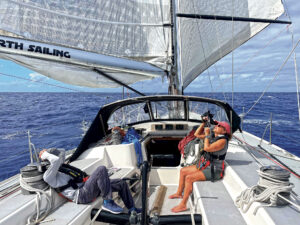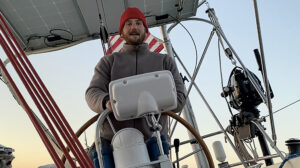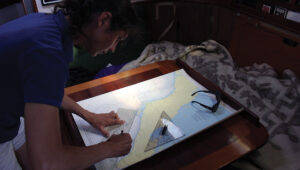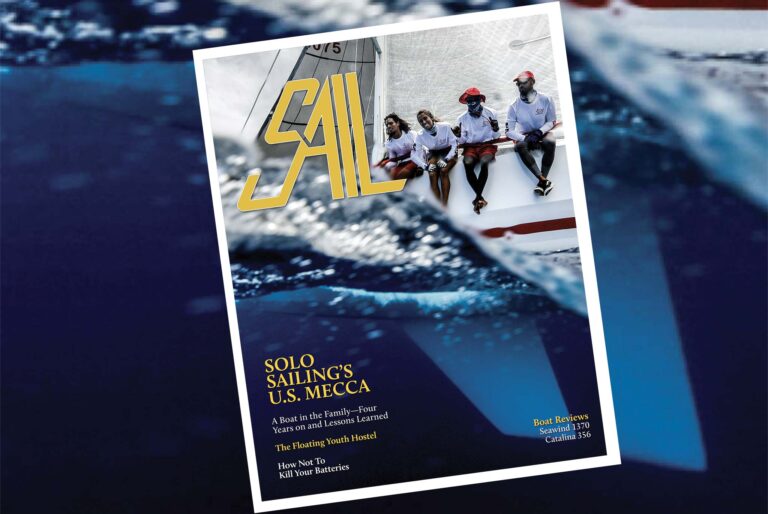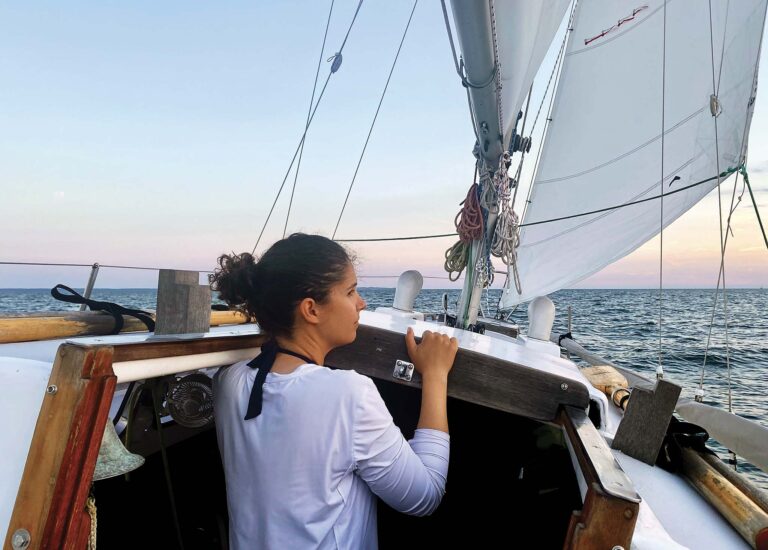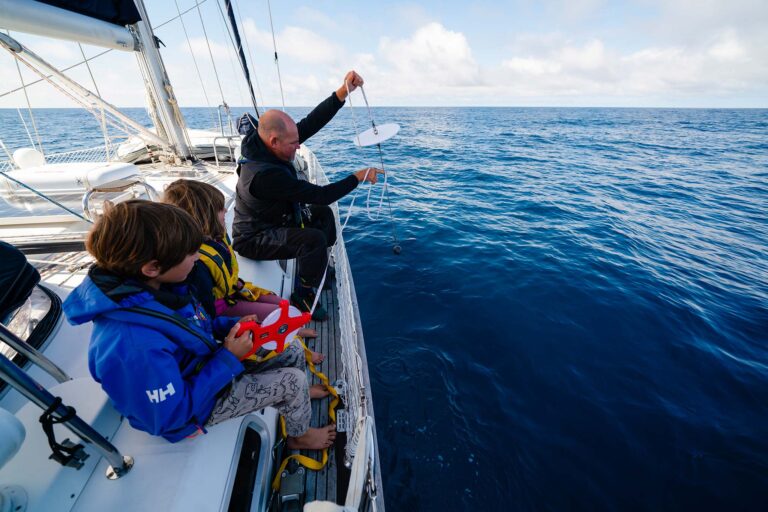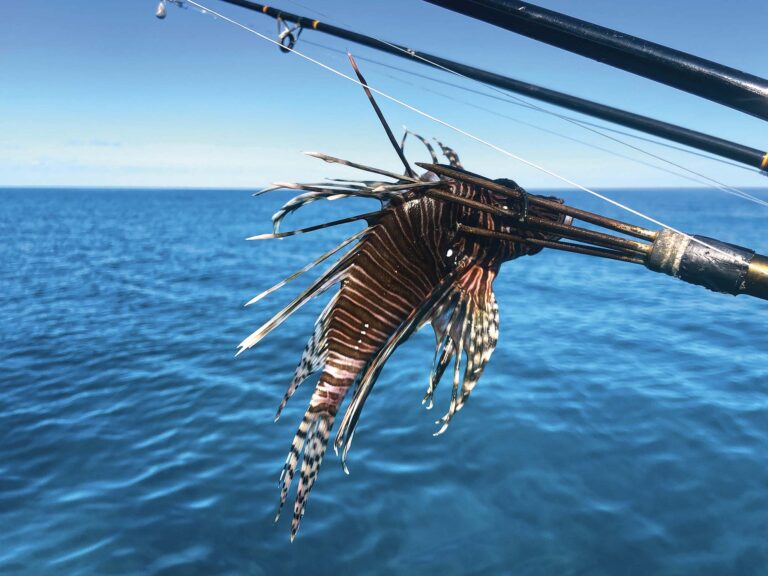After reading “The Essence of Seamanship” (July 2013) by Tom Cunliffe, as well as the online banter that followed, it became apparent that the topic of “seamanship” is a hot one, especially in today’s ever-changing world of on-water and systems technology. Here’s my take:
Our boat was built in 1966. Our GPS is a handheld unit from 1993. We use paper charts and no other electronics besides a VHF/AIS transceiver. We carry hank-on headsails (five of them) and 35 gallons of water in our main tank, and we steer with a tiller. We only run the engine to charge the batteries, and get us on and off a dock.
Nonetheless, my wife, Mia, and I feel safe aboard Arcturus.
Despite the lack of modern cruising gear, we’ve got all the safety gear we need: a Winslow liferaft (best on the market according to Adrift author Steven Callahan, and he would know), lifejackets and harnesses—with crotch straps and spray hoods—two EPIRBs, 30 gallons of additional water in gallon jugs in the bilge, a rechargeable sat phone and all the requisite flares, radar reflectors, etc. And we know what we are doing.
On Arcturus, we go forward to change headsails, we pump water out of the tank by hand, we plot our positions on paper, we fiddle with the windvane when the breeze gets shifty, we furl the mainsail on deck, haul in the anchor by hand and row ashore in the dinghy. But you know what? We do not mess with fidgety water pumps, we do not live with the annoying glow of a chartplotter, we do not have partially furled headsails flapping in the wind, we do not worry about the autopilot taking a dump. Sailing is an adventure for us, and we like it to feel like one.
These days a lot of sailors head to sea confusing technology with safety. Things like electric winches and windlasses, furling systems, watermakers and generators make life at sea convenient. But even if everything works, these systems require electricity, and that’s where problems arise. Besides, none of this stuff is truly necessary.
I recently heard a suggestion on signaling devices. I heard that flares and radios—stuff that will work no matter how badly damaged the boat is—are “primitive.” I heard that a simple AIS installation would solve the matter entirely, making all of that stuff redundant. What would happen, I wondered, if the boat lost power? But then I heard that solar panels and a backup source of electricity would save it! If you lose all power, I heard, you’re in big trouble anyway, and no amount of flares will help.
Here is another good one: a couple is planning to cross the Atlantic with their three young kids. The 50-foot boat is set up for racing, with all the latest technology. Carbon rig. Laminated sails. The works. The owner is not concerned that he and his wife will effectively be double-handing.
“Do you not think we ought to get a third crewmember?” his wife asks. “Nope! I have all the systems transmitting data to my iPhone. I will be monitoring everything from my bunk,” he replies. “If anything happens, I will know right away, and we can roll up the headsails!”
What if the furler fails? What if the electric autopilot fails? What if the alternator fails and there is no energy to power the autopilot, which might otherwise be working fine?
Everyone that sails offshore is taking a risk, perhaps bigger than they think. It is a wilderness out there, no matter how connected you feel. You are on your own in an environment that is indifferent to your well-being, and you had better know how to take care of yourself, independent of energy and technology. If you insist on increasing your systems, do so for the sake of safety, comfort and convenience, in that order.
So what is “seamanship?” In the last Volvo Ocean Race, Team Sanya received a seamanship award after the leg to Abu Dhabi for repairing rig damage that they suffered in a tropical storm, which they had intentionally steered toward for tactical reasons. The other crews were incensed—they fumed that the team should never have been in the storm in the first place—and at least one of them walked out of the prize-giving.
“As skippers, it is our job to minimize the risk to our guys because there is enough risk in this race as is,” said Chris Nicholson, skipper of Camper.
You hear these stories of “seamanship,” of heroic rescues, of patched-together rudders and masts when something goes wrong at sea. But seamanship is about more than solving problems when things go wrong. It starts long before the voyage. Getting the boat ready, getting yourself ready, thinking of all the contingencies before they happen—that’s seamanship! The best seamanship is exhibited by the crew with the fewest stories to tell. The best seamanship is boring.


